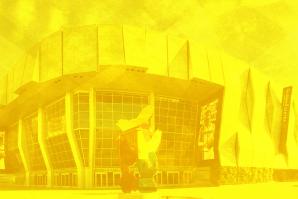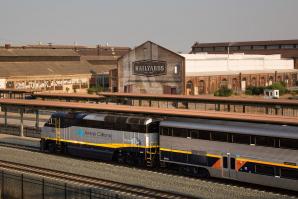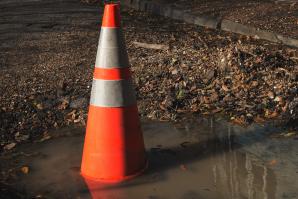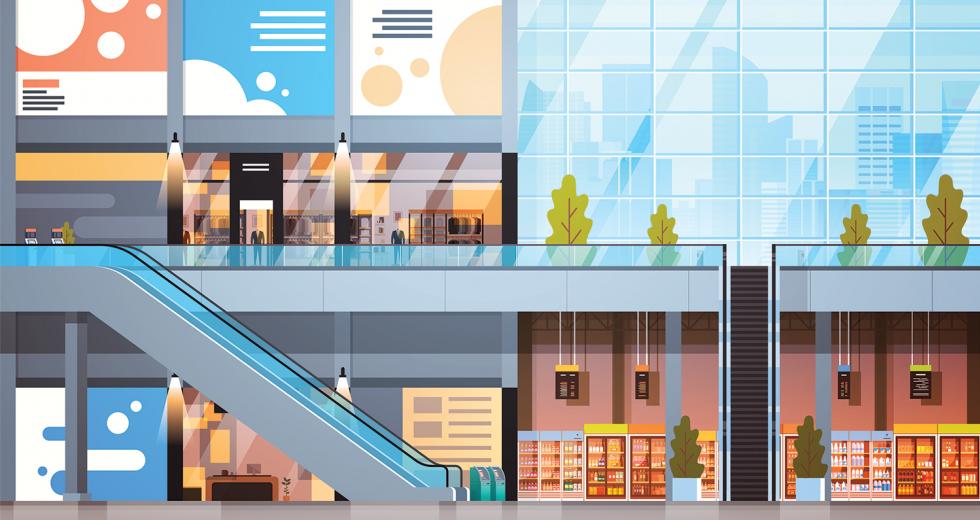I was reminiscing recently about downtown Sacramento when I was a kid. I remember so vividly what it was like when my grandma was alive and I was about 5 years old. My parents would drive me from Nevada City to spend the summer with my grandma in her McKinley Park home. It was always fun to sit out on the patio swing on her front porch and take cool naps in her basement when the Sacramento temperatures were soaring (no air conditioning in those days).
She would take me to the McKinley Park pool to swim while she’d watch from the bleachers. Many days, we’d catch the bus to downtown to go shopping. Kress department store was always fun — we’d often go to its food counter for a sandwich and a slice of cherry pie, a bargain at 15 cents. We’d usually stop at the Karmelkorn shop too, just outside the old Fox Theatre, and share a bag while we strolled from one store to another. Places like Hale’s, Montgomery Ward, Ransohoff’s, Breuners Home Furnishings, Kress and Woolworth’s were all favorites.
Since those days, downtown Sacramento has tried to reinvent itself several times, often with little success. It started with streetcars, then closed-off streets, then a menagerie of concrete monoliths and concrete seating areas up and down K Street. Through the years, the shopping dwindled and retail suffered. Even the former Downtown Plaza — now the site of the successful Golden 1 Center and Downtown Commons shopping, dining and entertainment area — seemed neglected by Westfield not long after it purchased it in 1998.
Today it seems you can’t drive down any downtown street without finding lanes blocked for construction and cranes in the air. And it appears Sacramento’s latest reinvention is infusing downtown with new energy as an urban spark plug for the region’s economy. And that includes shopping.
The Golden 1 Center is fulfilling its potential to stimulate new development at one end of downtown. Since the arena opened three years ago, 43 retail businesses have opened downtown and another 38 are planned in the next several months, according to the Downtown Sacramento Partnership 2018 annual report. Those businesses join another 100 retail shops in Old Sacramento. And this “retail renaissance” is spreading beyond downtown’s traditional retail core.
Sacramento has long relied on the redevelopment of K Street, the city’s original shopping district, to promote regional economic growth. The recent opening of The Hardin, a residential project on the 700 block of K Street, is an example of development the city has advocated for a long time. As a mixed-use project, it will include 72,000 square feet of retail space to go along with its 137 mixed-income residences.
That is a pattern throughout the city as it carries out a strategy of combining retail with residential development. Of the 35 most recent housing projects in the city’s core, about two dozen are mixed use, incorporating retail space where people live. That retail expansion is critical to the city’s ability to develop 15,000 new residential units downtown to increase density and the supply of affordable housing.
Related: At The Railyards, it’s full steam ahead
The new retail developments are diverse, offering restaurants and craft brewers, merchant goods and services. In short, they offer places to eat and drink, have fun and find the newest merchandise.
The big department stores I remember as a kid have largely gone the way of that 15-cent-a-slice pie at the Kress lunch counter. Retail shops today are more specialized and spread throughout neighborhoods.
Contrary to the popular trend, I’m not an online shopper. I like shopping in person and the experience of browsing as I stroll from shop to shop.
Even in this age of Amazon — nearly two-thirds of Americans have made a purchase through the online megaretailer — that’s not as old-fashioned as it sounds. A 2018 marketplace survey by real estate company CBRE concluded that, as e-commerce rises, the strongest retailers are those that offer a unique experience in their physical stores as a complement to their online efforts.
Even as the marketplace changes, two things remain true: Retail activity is still a critical part of downtown Sacramento’s economic success, and it makes the city come alive. And strolling from shop to shop to see and feel the latest stuff is still as much fun as it was when I was a kid.
Winnie Comstock-Carlson
President and Publisher
—
Discuss this commentary and others on our LinkedIn page; follow Comstock’s on LinkedIn by clicking or tapping here.
Recommended For You

The Arena Is a Gold Spike for Downtown
A new page on a new calendar is always a time of optimism. The pages are blank and I wonder what I will have written on them by the time the year has run its course. But right now, I’d like to slow down and appreciate the year we just enjoyed.

Convention Center is Key to the Next-Gen Economy
In January, portions of the Sacramento Convention Center came tumbling down, the first phase of a remodel and expansion after two years of planning for a larger and more efficient facility. The Panattoni Building at 15th and K streets that houses the administration offices surrendered to the wrecking ball to make room for what will be a new entrance to a bigger and better convention center.

All Aboard for a MegaRegional Economy
Ever since the Golden Spike was driven into the ground, 150 years ago this month, trains have played a critical role in Sacramento’s growth and identity.

Infrastructure Issues Demand Attention
Infrastructure — roads, bridges and dams — is the backbone of any economy. Business can’t function without it. The Association of Civil Engineers estimates that nationally, defective or failing infrastructure will cost the average family $3,400 a year over the next decade.




